Grass growth rates continue to be a good bit lower than normal for the time of year, with Pasturebase figures putting the average grass growth rate at 60kg/day on dairy farms.
While not a bad growth rate as such, it’s still only at or below the herd demand, and with growth rates set to drop to 50kg/day for the coming week, it’ll be below the demand for most herds, meaning farm cover is going to drop.
Growth rates reflect soil moisture deficits and the rainfall situation in any given area. It’s very frustrating having to put in extra feed during the summer months.
For many farmers, this is now an annual event. Prior to 2018 it may have been a one in six or a one in seven year event that growth rates went below demand for more than two weeks at a time.
It does call into question the merits of stocking the farm at a demand of 70kg/day, or more over the summer months. This is especially the case where chemical nitrogen is being replaced by clover.
While clover does fix nitrogen it doesn’t deliver the big burst in growth that you would get with chemical nitrogen, but in many ways it’s more consistent.
Clover is really beginning to take off on farms now and the risk of bloat has definitely increased. The high risk periods tend to be mornings and on wet, dampish days. How well fertilised the field was is also a factor.
High applications of potash can make the clover more lush and this increases the risk of bloat.
Putting cows on a 12 hour break when grazing very high clover fields is a good way to prevent them from gorging on it, as they will be forced to eat grass stem as well as clover leaf.
Some farmers will give cows a smaller break in the morning and then take down the reel after they lock them in. Similar risks exist when grazing high clover fields with cattle.
The trick is to make sure they don’t gorge themselves on the leaf, so give a small break first to take the hunger edge off them before giving them the rest of the field.
Growth rates on dairy farms are lagging behind normal and are set to drop further this week, with rainfall amounts in the forecast very variable. Clover is really beginning to take off and where present in good quantities nitrogen fertiliser can be halved or cut out completely but P and K should continue to be applied. With some rain in the forecast, it may be a good opportunity to apply some chemical nitrogen or soiled water to fields that haven’t got nitrogen in over a month. There could be an opportunity to get second cut silage off early next week. You will need this land back in the grazing area for building up autumn covers. Brendan Horan – Teagasc Curtins, Co Cork
Growth has slowed to 38kg DM/ha this week as dry conditions persist and moisture deficits are back into the mid-50s.
Pasture quality is holding well and we continue to graze to 4cm, but recovery is very slow after grazing.
As we have all the area available for grazing, we have fed cows 1kg concentrates per head per day for the last week and we have kept the AFC up at 600kg DM/ha.
Cows are entering paddocks at 1,100 kg DM/ha on a rotation length of 30 days.
Clover content is ranging from 5% to 55% on clover paddocks and we are spreading no fertiliser post-grazing.
Stocking Rate (cows/ha) 2.89
Growth Rate (kg/day) 38
Average Farm Cover (kg/cow) 213
Yield (l/cow) 18
Fat % 4.76
Protein% 3.58
Milk Solids (kg/cow) 1.5
Supplement fed (kg/cow/day) 1
Denis Finnegan – Coachford, Co Cork
It has been very dry the past number of weeks, but we are lucky that we have some dry ground and some heavy ground.
Having a bit of both means that we are never too badly affected with extremes in weather.
Cows are on a 21-day rotation, with 18 units of 18-6-12 being spread on paddocks as I had difficulty in sourcing protected urea.
Second cut silage will be completed today (Wednesday) with some paddocks being baled up along with it.
We cut out paddocks moreso with them being stemmy rather than heavy, as we look to clean up paddocks heading in to the back end.
Stocking Rate (cows/ha) 3.91
Growth Rate (kg/day) 73
Average Farm Cover (kg/cow) 180
Yield (l/cow) 22.9
Fat % 3.98
Protein% 3.46
Milk Solids (kg/cow) 1.77
Supplement fed (kg/cow/day) 1
William Dennehy – Currow, Co Kerry
Growth is holding up nicely at the moment. We were running a little tight when spreading 20 units/acre of N so we have upped it to 24 units/acre on paddocks without clover for this round.
Some of the clover paddocks are receiving nine to 10 units of N through 18-6-12+S as I felt they were lacking in sulphur a bit. We did a full reseed on a paddock last year with Aston Energy plus 2kg of Chieftain clover.
This paddock received 50 units of chemical N in spring and is now receiving 2,000 gallon/acre of parlour washings which has been tested at 4-4-13 per 1,000 gallons. So far this year it’s grown 8.26 tonnes DM.
Stocking Rate (cows/ha) 3.52
Growth Rate (kg/day) 69
Average Farm Cover (kg/cow) 205
Yield (l/cow) 20
Fat % 4.37
Protein% 3.61
Milk Solids (kg/cow) 1.64
Supplement fed (kg/cow/day) 2.5
Grass growth rates continue to be a good bit lower than normal for the time of year, with Pasturebase figures putting the average grass growth rate at 60kg/day on dairy farms.
While not a bad growth rate as such, it’s still only at or below the herd demand, and with growth rates set to drop to 50kg/day for the coming week, it’ll be below the demand for most herds, meaning farm cover is going to drop.
Growth rates reflect soil moisture deficits and the rainfall situation in any given area. It’s very frustrating having to put in extra feed during the summer months.
For many farmers, this is now an annual event. Prior to 2018 it may have been a one in six or a one in seven year event that growth rates went below demand for more than two weeks at a time.
It does call into question the merits of stocking the farm at a demand of 70kg/day, or more over the summer months. This is especially the case where chemical nitrogen is being replaced by clover.
While clover does fix nitrogen it doesn’t deliver the big burst in growth that you would get with chemical nitrogen, but in many ways it’s more consistent.
Clover is really beginning to take off on farms now and the risk of bloat has definitely increased. The high risk periods tend to be mornings and on wet, dampish days. How well fertilised the field was is also a factor.
High applications of potash can make the clover more lush and this increases the risk of bloat.
Putting cows on a 12 hour break when grazing very high clover fields is a good way to prevent them from gorging on it, as they will be forced to eat grass stem as well as clover leaf.
Some farmers will give cows a smaller break in the morning and then take down the reel after they lock them in. Similar risks exist when grazing high clover fields with cattle.
The trick is to make sure they don’t gorge themselves on the leaf, so give a small break first to take the hunger edge off them before giving them the rest of the field.
Growth rates on dairy farms are lagging behind normal and are set to drop further this week, with rainfall amounts in the forecast very variable. Clover is really beginning to take off and where present in good quantities nitrogen fertiliser can be halved or cut out completely but P and K should continue to be applied. With some rain in the forecast, it may be a good opportunity to apply some chemical nitrogen or soiled water to fields that haven’t got nitrogen in over a month. There could be an opportunity to get second cut silage off early next week. You will need this land back in the grazing area for building up autumn covers. Brendan Horan – Teagasc Curtins, Co Cork
Growth has slowed to 38kg DM/ha this week as dry conditions persist and moisture deficits are back into the mid-50s.
Pasture quality is holding well and we continue to graze to 4cm, but recovery is very slow after grazing.
As we have all the area available for grazing, we have fed cows 1kg concentrates per head per day for the last week and we have kept the AFC up at 600kg DM/ha.
Cows are entering paddocks at 1,100 kg DM/ha on a rotation length of 30 days.
Clover content is ranging from 5% to 55% on clover paddocks and we are spreading no fertiliser post-grazing.
Stocking Rate (cows/ha) 2.89
Growth Rate (kg/day) 38
Average Farm Cover (kg/cow) 213
Yield (l/cow) 18
Fat % 4.76
Protein% 3.58
Milk Solids (kg/cow) 1.5
Supplement fed (kg/cow/day) 1
Denis Finnegan – Coachford, Co Cork
It has been very dry the past number of weeks, but we are lucky that we have some dry ground and some heavy ground.
Having a bit of both means that we are never too badly affected with extremes in weather.
Cows are on a 21-day rotation, with 18 units of 18-6-12 being spread on paddocks as I had difficulty in sourcing protected urea.
Second cut silage will be completed today (Wednesday) with some paddocks being baled up along with it.
We cut out paddocks moreso with them being stemmy rather than heavy, as we look to clean up paddocks heading in to the back end.
Stocking Rate (cows/ha) 3.91
Growth Rate (kg/day) 73
Average Farm Cover (kg/cow) 180
Yield (l/cow) 22.9
Fat % 3.98
Protein% 3.46
Milk Solids (kg/cow) 1.77
Supplement fed (kg/cow/day) 1
William Dennehy – Currow, Co Kerry
Growth is holding up nicely at the moment. We were running a little tight when spreading 20 units/acre of N so we have upped it to 24 units/acre on paddocks without clover for this round.
Some of the clover paddocks are receiving nine to 10 units of N through 18-6-12+S as I felt they were lacking in sulphur a bit. We did a full reseed on a paddock last year with Aston Energy plus 2kg of Chieftain clover.
This paddock received 50 units of chemical N in spring and is now receiving 2,000 gallon/acre of parlour washings which has been tested at 4-4-13 per 1,000 gallons. So far this year it’s grown 8.26 tonnes DM.
Stocking Rate (cows/ha) 3.52
Growth Rate (kg/day) 69
Average Farm Cover (kg/cow) 205
Yield (l/cow) 20
Fat % 4.37
Protein% 3.61
Milk Solids (kg/cow) 1.64
Supplement fed (kg/cow/day) 2.5



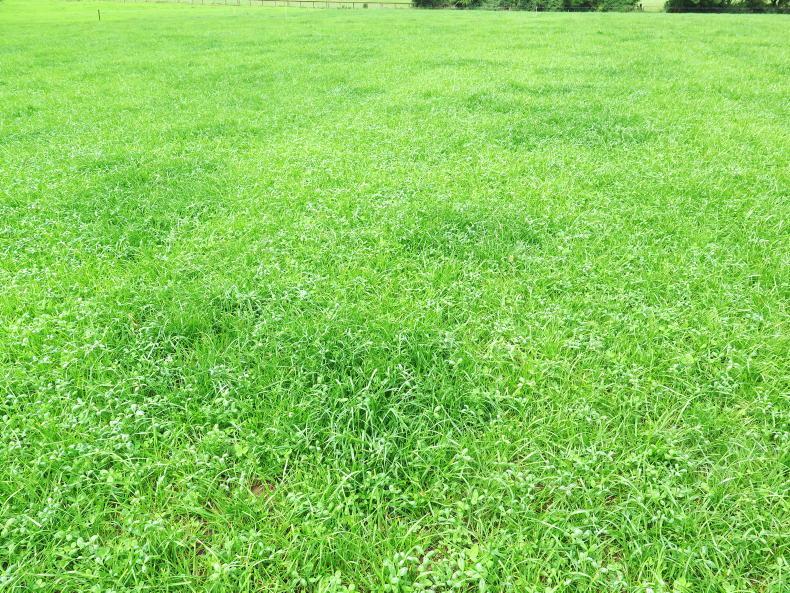

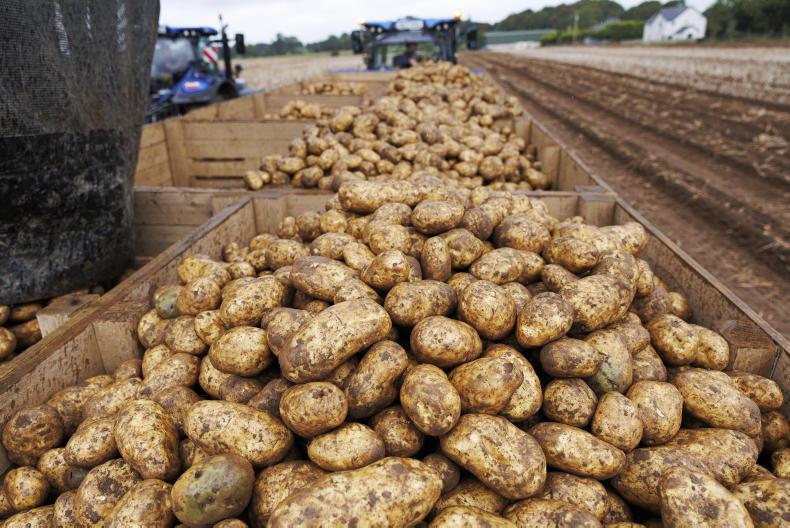
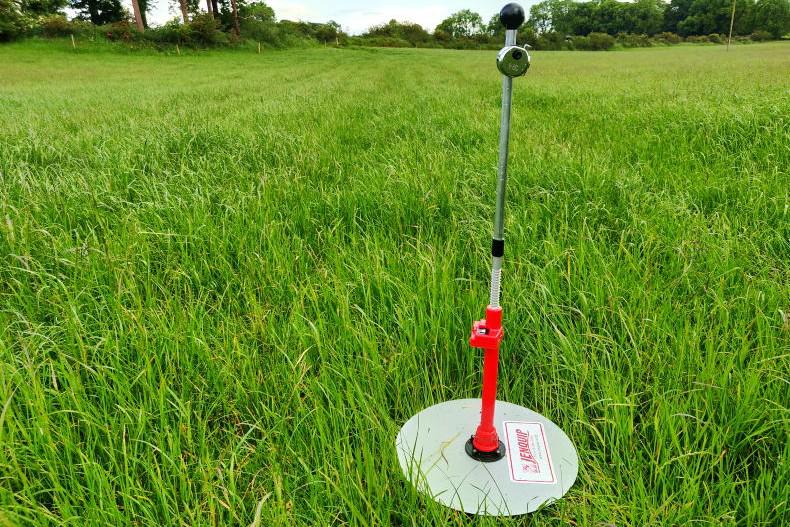
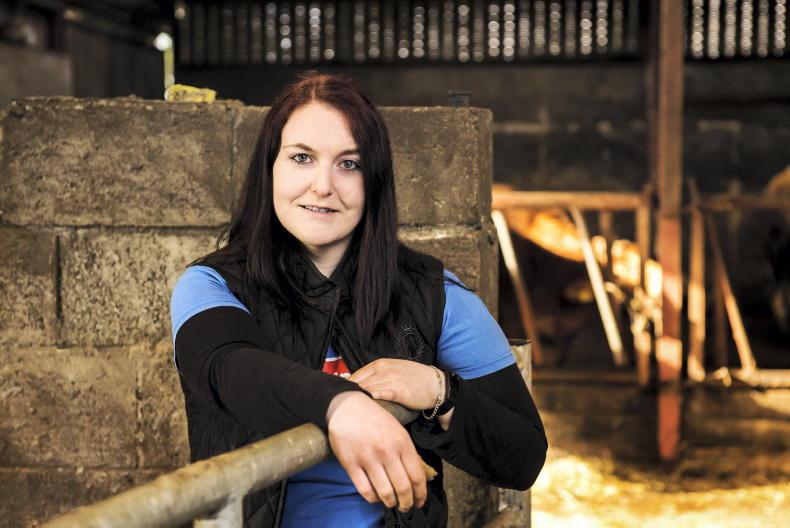
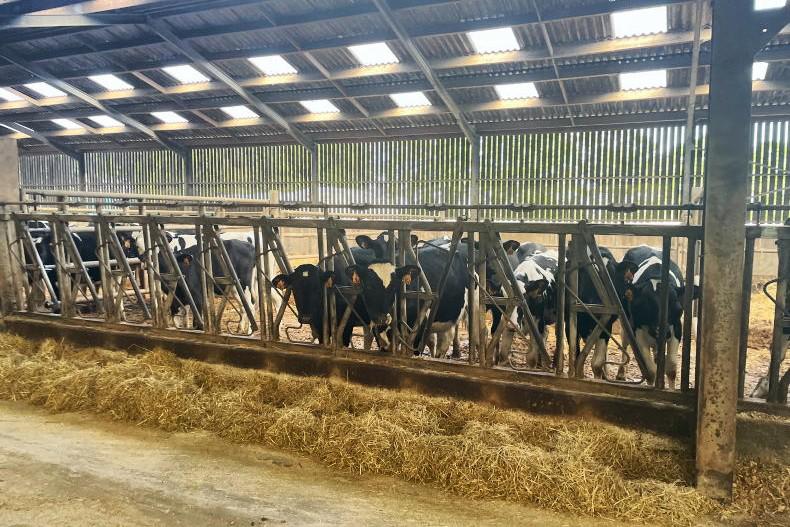
SHARING OPTIONS